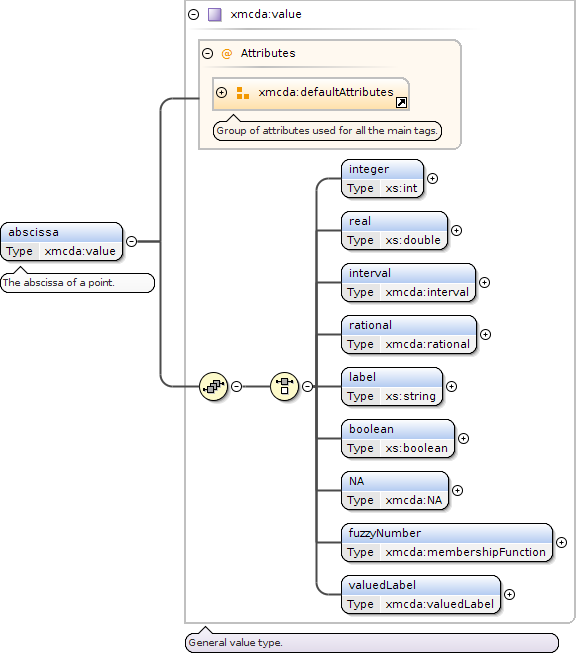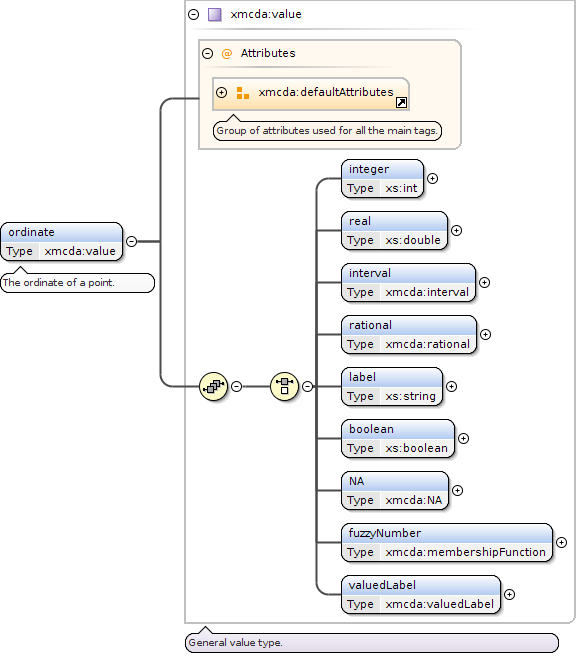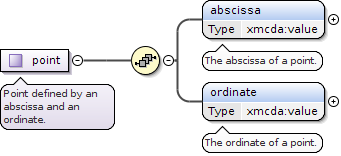| Namespace | No namespace | |||||||||||||||||||
|
Annotations
|
|
|||||||||||||||||||
|
Diagram
|
 |
|||||||||||||||||||
| Type | xmcda:value | |||||||||||||||||||
|
Properties
|
|
|||||||||||||||||||
| Model | ||||||||||||||||||||
| Children | NA, boolean, fuzzyNumber, integer, interval, label, rational, real, valuedLabel | |||||||||||||||||||
|
Instance
|
|
|||||||||||||||||||
|
Attributes
|
|
|||||||||||||||||||
|
Source
|
|

